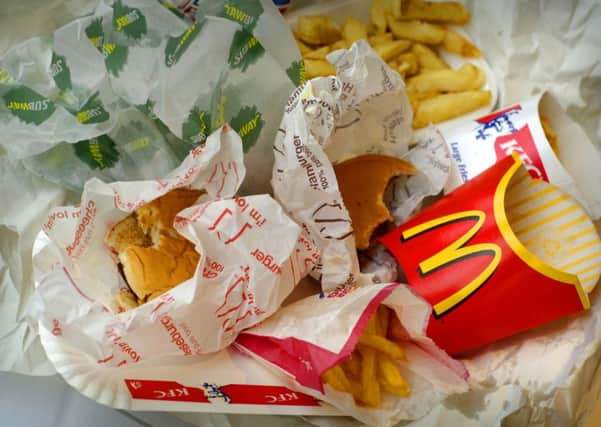Andy MacGregor: How do junk food ads influence children?
This article contains affiliate links. We may earn a small commission on items purchased through this article, but that does not affect our editorial judgement.


However, in 2014, around a third of Scottish children were at risk of being overweight or obese, a figure that has remained relatively unchanged for several years. Being overweight or obese is the single biggest preventable cause of cancer after smoking, associated with 10 different types of cancer and 18,100 cancer cases a year in the UK.
NatCen Social Research was commissioned by Cancer Research UK to find out what primary school children thought about unhealthy food advertising. In total, we spoke to over 100 children aged 9-12 in schools in Scotland and England.
Advertisement
Hide AdAdvertisement
Hide AdIt came as no surprise to us that despite current advertising rules pupils were very familiar with adverts for unhealthy foods, and described their favourites in detail, even in one case acting out scenarios based on a sweets advert with their friends.
The young people were in no doubt that the adverts influenced them, and indeed their families.
They told us that, in the short term, these adverts made them feel hungry and want to buy these items – one boy wanted to “lick the screen” after viewing a pizza advert, while another boy added:
“You might be eating a piece of fruit, you might see the advert and you might just throw it in the bin and ask your mum for money and leg it to the shop.”
As well as this direct effect, the young people also admitted that these adverts made them more likely to ask their parents for the unhealthy food advertised.
A girl from Edinburgh said:
“When they had a [chocolate] advert out … I asked my mum if I could have it and she said ‘no’ and I was annoyed and I kept trying and she finally said ‘yes’ and I got to go to the shops to get it.”
Celebrity endorsement of unhealthy foods also seemed to influence the young people. A boy from Edinburgh, giving his views of a crisps advert, said:
“The fact that they put [famous football player] …in it you’re just like ‘Oh! These people eat it!’”
Advertisement
Hide AdAdvertisement
Hide AdSo if children aren’t seeing adverts on programmes aimed at them, when are they seeing them?
Children told us they saw these adverts on television in the evening or at the weekends, typically during family entertainment programmes or during sporting events.
They also reported being exposed to adverts for unhealthy foods when online, for example when watching YouTube clips, or when at the cinema.
Our research shows that current restrictions on adverts for unhealthy food and drink on TV are inadequate. As a result, Cancer Research UK is calling for such adverts to be banned before the 9pm watershed in an effort to reduce children’s exposure to this sort of marketing.
In addition, the Committee of Advertising Practice (CAP) is currently consulting on introducing further restrictions on such adverts appearing online, as well as in other media including the press, posters and billboards.
However, in order to combat the rising impact of children’s obesity on the health of the nation, it is clear that a comprehensive childhood obesity strategy - which takes into account not only food advertising and promotion, but also education, taxation and product reformulation - is needed.
Andy MacGregor is the Head of Health Policy Research, ScotCen Social Research
DOWNLOAD THE SCOTSMAN APP ON ITUNES OR GOOGLE PLAY